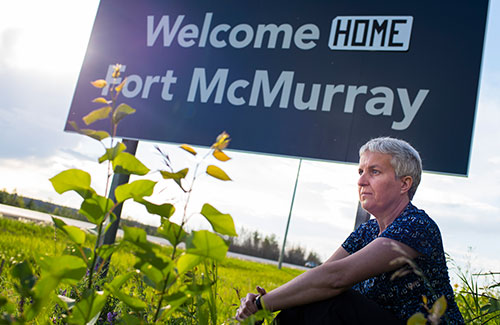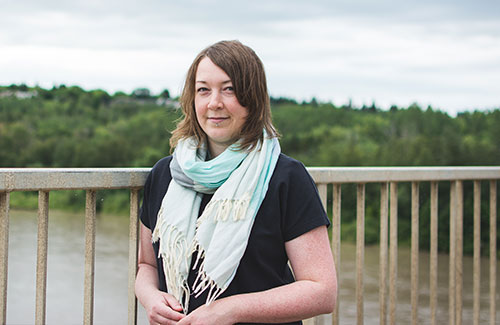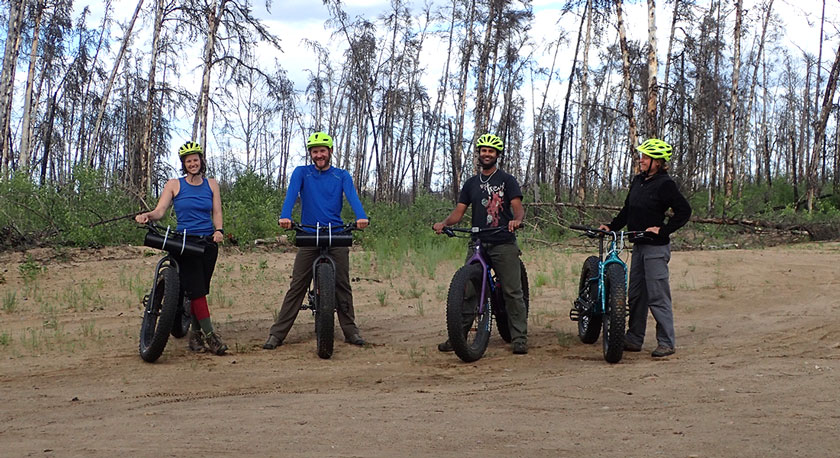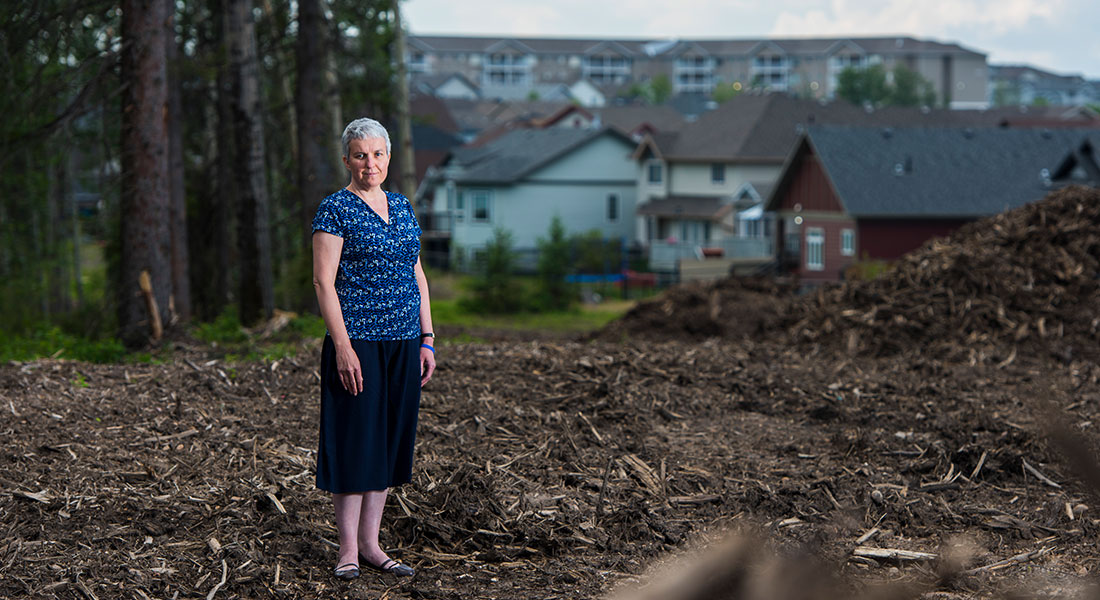
In May 2016, a wild fire swept through Fort McMurray, Alberta. The fire destroyed nearly 2500 homes and buildings and triggered the largest wildfire evacuation in Alberta history.
When Tara McGee moved to Alberta from Australia in 2002, wildfire management was a low priority for Canada. Although the country was no stranger to fires, they weren't seen as posing a threat to people and communities. "Fires were not something most Canadians felt connected to," McGee shares.
Turn the clock forward to 2016, and news of the Fort McMurray wildfires reaches all around the globe. All 80,000 residents are evacuated from the city-the largest such operation in Alberta's history. For more than two months, the out-of-control blaze traverses Northern Alberta and Saskatchewan, scorching nearly 590,000 hectares of forest.
McGee visited Fort McMurray in the late spring to offer her expertise in disaster management. "Flying in, I could see the large extent of fire damage," says McGee. The impact was scattered and unpredictable, with several neighbourhoods destroyed and much of the rest of the city left untouched.
Throughout her career at the U of A, McGee has watched wildfire move from the sidelines into familiar territory for Canadians. One major driver behind the changing conversation was the personal connection many Albertans and British Columbians had with evacuees and affected communities.
Changing the conversation
As an associate professor of human geography in the Department of Earth and Atmospheric Sciences, McGee's research lies at the intersection of people and natural hazards. She studies wildfire mitigation by homeowners and local governments as well as how First Nations communities are affected by wildfire evacuations.
Throughout her career at the U of A, McGee has watched wildfire move from the sidelines into familiar territory for Canadians. Fire forced the evacuation of 33,000 people from Kelowna in 2003. All of Slave Lake's 7000 residents were evacuated when much of the town destroyed by a blaze in 2011.
One major driver behind the changing conversation was the personal connection many Albertans and British Columbians had with evacuees and affected communities. Another was the extensive media coverage. Both factors served to focus public and government attention on fire preparedness and mitigation.
The nature of fires makes responses distinct from other natural disasters. Wildfire evacuations are faster, with less lead time compared to other hazards. "The speed means that people may need to evacuate at any time of day or night," notes McGee. As in the case of Fort McMurray, a fire can start a fair distance away from a community and pose little threat until a sudden change in wind or weather prompts an evacuation.
The human dimension of wildfire
Initially, McGee's research centred on homeowners reducing fire risk. "What we really wanted to know was how Albertans were perceiving and mitigating fire risk." This focus has since evolved into the FireSmart program, a strategy used across the province to lessen wildfire threats. FireSmart uses homeowner and community-based tools including education, vegetation management, and land-use planning.
Most fire reduction and emergency planning in the province occurs on a municipal level. Communities are responsible for everything from mitigation to response. Provincial governments provide funding, support, and information, but are only directly responsible for provincial lands. Risk management for each municipality poses its own challenges and opportunities, and thus policy frameworks range widely from one community to another.
McGee and her students conducted studies in 2007 and 2012 to identify how Alberta and B.C. municipalities were diminishing fire risk. They identified a range of strategies including vegetation removal, hazard assessment on homeowner properties, and communication. Land-use planning strategies saw a significant increase between the two studies, particularly in B.C.Most fire reduction and emergency planning in the province occurs on a municipal level. Communities are responsible for everything from mitigation to response.
Another branch of McGee's research studies how First Nations are affected by wildfire evacuations. The initiative-known as the First Nations Wildfire Evacuation Partnership-brings together researchers, First Nations stakeholders, and emergency response groups to understand and reduce the negative impacts of wildfire evacuations on First Nations communities. The initiative was created in response to extensive evacuations of First Nations communities in 2011 and includes groups from across Alberta, Saskatchewan, and Ontario.
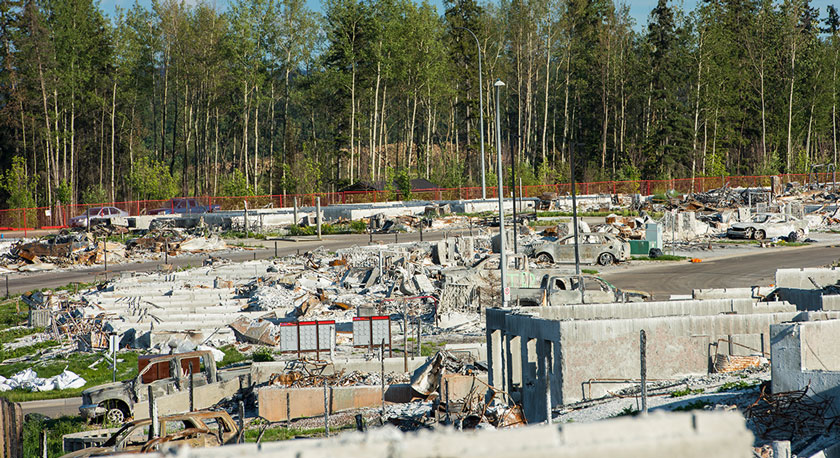
"University staff and volunteers worked together to provide accommodation, meals, and laundry services, as well as access to physical education programs and facilities, libraries, dental services, health care and mental health supports, and translation services. It was an incredible effort."
- David Turpin, President and Vice-Chancellor, University of Alberta
By the numbers
UAlberta responds to the Fort McMurray crisis
Stats:
- With support from the Government of Alberta and the Canadian Red Cross, the University of Alberta housed more than 1200 evacuees in 650 rooms at Lister Centre for nearly two months. Another 100 Canadian Red Cross volunteers were housed in residence at Campus Saint-Jean.
- More than 2000 volunteers staffed a barbecue for displaced Fort McMurray residents and the UAlberta community. It raised $16,435 and collected 90 boxes of donated food and personal items.
- During a 10-day period, more than 35,000 Fort McMurray evacuees collected emergency funds in the form of prepaid debit cards at the Butterdome.
- The university also created the Disaster Relief Bursary to support students displaced by natural disasters.
Wildfire impacts farther afield
Just as the management of wildfires involves a diverse range of stakeholders, the study of wildfires requires a variety of scientific disciplines and tools. As a newcomer to Edmonton, Sarah Styler describes her amazement at the smoky haze that enveloped the city during the fires. "I'd never seen anything like it before." In her new role as assistant professor in environmental chemistry at the U of A, Styler studies air quality in polluted urban regions, particularly areas affected by dust.
Research on airborne particles-including dust and soot like those from the Fort McMurray fires-informs our understanding of urban air quality and associated health impacts. "A lot of what we know about air quality comes from research in North America and Western Europe," says Styler, "but most of our population growth is not in these places."
Styler targets her research at developing regions, where our understanding is more limited. Even so, her insights are highly relevant in a Canadian context, since springtime dust emission from roadways can lead to major air quality reductions.
Wildfire emissions are one source of particulate matter and can cause significant reductions in air quality. Particulates can remain in the atmosphere for up to several weeks and be transported for long distances. This can have implications for air quality far outside the direct vicinity of the fire.
The Air Quality Health Index (AQHI) is used by Environment and Climate Change Canada as a standard measure of air quality. The index is calculated from concentrations of particulate matter, ozone, and nitrogen dioxide, and is used as a health-protection tool.
Throughout the fires, AQHI in Fort McMurray reached the maximum level, presenting a very high health risk. This was one of the limiting factors for firefighting and cleanup crews. In Edmonton, more than 400 kilometres away, air quality was intermittently poor enough for advisories to be issued.
Smoke plumes are also sensitive to weather conditions and wind direction, which can lead to rapid and often unpredictable changes in air quality. "During the fire, I was asked to contribute to an article on air and water quality," shares Styler. "In the time it took to put the article together, air conditions in Fort McMurray changed from stable to critical."
In context of our changing climate, Styler expects wildfires to have a growing influence on air quality in the province. This trend has been recognized by a network of researchers across North America currently examining wildfire impacts on air quality. What kinds of particles do fires release? How does their composition change as they move through the atmosphere? What are the health impacts at and downwind of the fire?
"There are tons of questions that can be asked," says Styler. Once her new lab is fully operational, she plans to be out on the roof of the chemistry building sampling at the next hint of smoke.
Future Research
As with any natural disaster, the aftermath of the Fort McMurray wildfire bears more questions than answers. How were the fires influenced by changing weather patterns in Northern Alberta, and are they a sign of what to expect in the future? How effective was the evacuation (which included more than 1200 people housed at University of Alberta residences), and what could have been done differently? How can the Fort McMurray experience inform wildfire mitigation and preparedness across the province?
McGee has already begun to study how the Fort McMurray experience can help other municipalities improve their preparedness. She developed an online survey to learn about evacuees' experiences. She continues to connect with key stakeholders and community leaders in Fort McMurray and surrounding communities to identify the major successes and challenges from the evacuation. In one of McGee's courses this year, she plans to organize interviews with students who volunteered to host and support Fort McMurray evacuees.
McGee hopes that the media coverage and awareness from the fire will lead to other municipalities evaluating their own preparedness, researchers and stakeholders understanding what worked and what didn't, and higher levels of government supporting municipalities to effectively limit and manage emergencies.

Alan Shapiro ('13 BSc) is a science communicator and water resource consultant based in Vancouver. Since completing his BSc in Environmental Earth Science at the U of A, he has worked with students, researchers, and scientific institutions to develop effective science communication strategies.
Fire forces field researchers to think outside the box and onto the bike
By Jennifer Pascoe on October 31, 2016
When the Fort McMurray wildfire almost forced the cancellation of an entire field season, putting the timeline for Elly Knight's PhD research on the federally-threatened Common Nighthawk in potential jeopardy, the industrious student and her committed supervisor Erin Bayne (biological sciences) were forced to rethink their approach.
Though many of Bayne's impressive group of 18 graduate students works in Northeastern Alberta, Knight's field area was the one presented with the most extreme logistical challenges in the early days of the wildfire.
"There was a lot of panic in our lab," says Knight. "Fires are unpredictable, and 'the beast' was really hard to get ahold of."
Knight focuses on post-wildfire ecology: her thesis addresses the relationship between nighthawks' acoustic activity and habitat use. The species typically thrives in burned out areas.
She works in the Richardson area, a five-year-old burn--the second largest in Alberta's history with more than 700,000 hectares of boreal forest destroyed in 2011, slightly larger than the 600,000 hectares destroyed this year. Though there was unburned nighthawk habitat buffering the two areas, highway closures and the Fort McMurray evacuation meant restricted access to land and supplies like water, food, and fuel. Additionally, there was a provincial ban on the quads needed to navigate the challenging terrain.
An avid cyclist, Knight joked to Bayne that they should try using bikes instead of quads to get around the sandbox-like boreal forest. She remembered that before fat bikes became the go-to choice for winter cyclists, they were designed for navigating sand. The only problem was that fat bikes are expensive, and Bayne's lab had already lost so much equipment in the fire meaning resources were already at a premium.
Spurred on by suggestions and support from the U of A's Office of Sustainability, Knight hopped on her road bike to enlist local bike shops for their help. She was overwhelmed by the response, with both United Cycle and Hardcore Bikes loaning two bikes each (from their test bikes and winter rental fleet respectively), no questions asked, to Knight and her three field technicians for their two months in the field.
"It allowed us to work independently and access areas we wouldn't have been able to otherwise," says Knight. "We loved using the bikes, because we could just float over the sand." Moving forward to the next field season, the Bayne lab is going to try to further incorporate this low-carbon approach to their field work.
